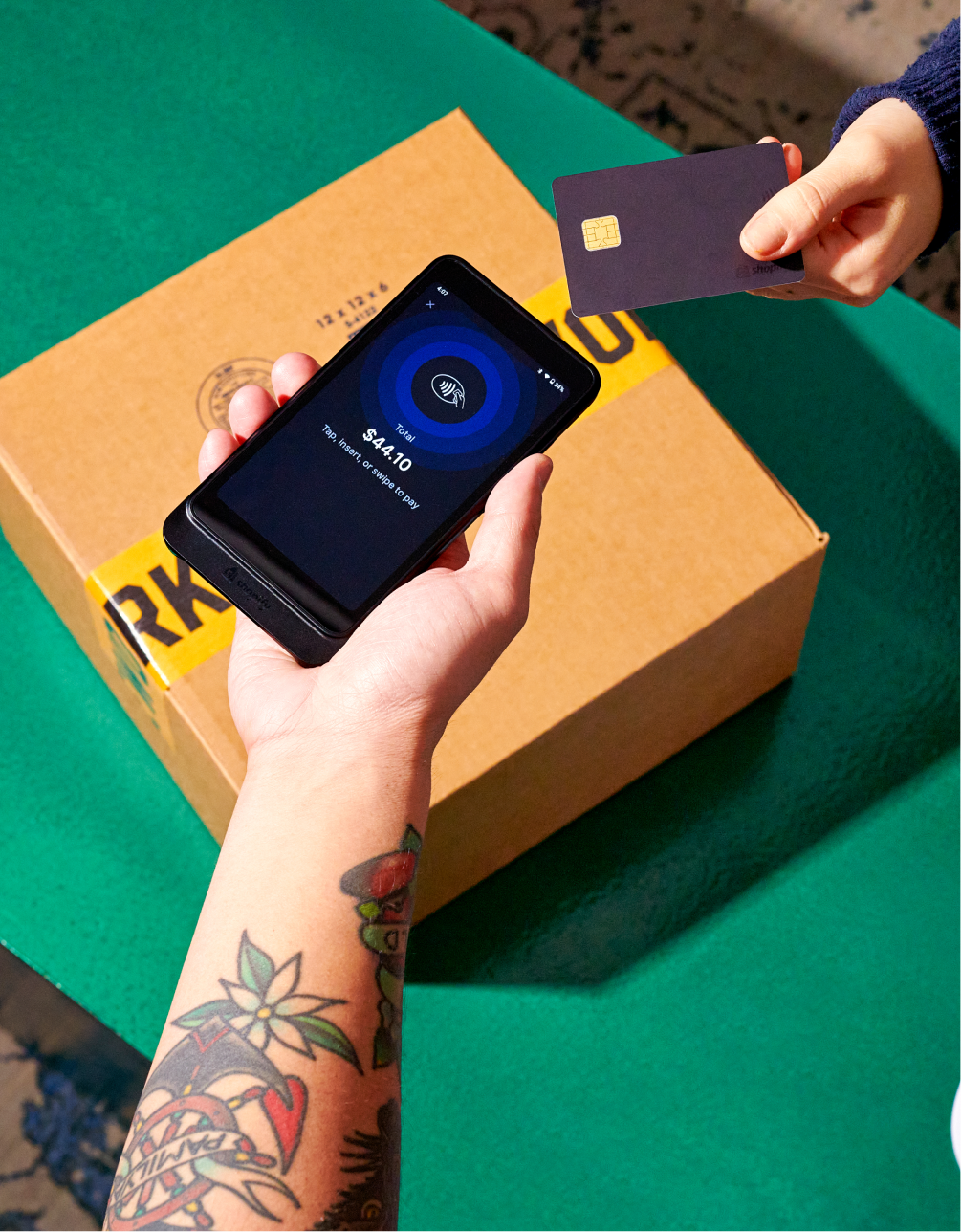Next to your brand, your website is the most significant part of your online presence.
While aesthetics may not look like a priority in front of a store’s functionality, a study by ResearchGate on web page visual design focus in online shopping, found that website design is a key factor affecting visitors’ conversion into customers.
When you start an online store, you begin with a store design that seems ‘apt’ at that moment. But as you grow and add more products to your site, you start to lose sight of the design to stay focused on the sales you’re making.
That’s exactly where you could be leaving money on your table.
If in the last couple of months, you have seen your website conversions drop or suddenly noticed a dip in consumer interest, it might be time to give it a ‘fresh cut’.
But redesigning a website is a lot of time and resource investment. So in this article, we’re going to walk you through a few signs you need to take note of.
Signs your business needs a website redesign
1. Your customers find you outdated
Websites are like cars– they need maintenance and care like any other machine to be sustainable and useful. Yet, there are many brands out there that are letting their websites go to waste, treating it as a “one-and-done” deal, catering to basic functionalities.
In times when technology is taking over digitization and trends change so rapidly, you need to keep up with your consumers.
How to identify the signs?
- Look into store analytics for customer insights
- Leverage social listening to see what customers have to say about you
- Use sentiment analysis to identify the intent behind online conversations around you
- Conduct a competitor analysis to see how they’re adapting to trends
What do we recommend?
Most experts suggest updating your website every four to five years.
But we also suggest following a consistent approach to updating your website and not waiting that long. This may include adding a new web page to your website every now and then - be it for a new product or collection, or an updated policy.
You can also choose to make smaller changes like product imagery, videos or hero banners to get started.
2. Your brand has poor mobile conversions
According to statistics, about 88% of Indians make use of mobile devices to make purchases.
In addition to the above, it was also found that almost 80% of the internet traffic comes from mobile devices. That’s why the focus on creating mobile responsive websites has grown over time, but that may not be enough considering how our use of smartphones has evolved as well.
How to identify the sign?
- Look into store analytics to identify your mobile traffic
- Your mobile bounce rate is high
- Mobile traffic tends to drop off from the first page
- Your mobile conversion rate is medium to low
What do we recommend?
As you might already know, websites with a responsive design conform to all screen sizes and work within intimate spaces like smartphones as well. This results in the ability for users to access your site from anywhere and on any device, no matter the size or model of device that they may be using. All Shopify themes are hence designed to be responsive from end-to-end.
But if you are seeing the majority of your traffic from mobile devices, you may need to look into creating a mobile app for your store as well. You can do this with the help of Shopify apps - explore them here.
We also recommend going through these additional resources:
- The Rise of Mobile Commerce (mcommerce) in India and How to Get Started
- The Age of Nanodesign: How Mobile Commerce is Transforming UX and CX Forever
3. Your web pages are taking too long to load
Your site's page speed is considered by search engines as one of the main factors influencing your ranking on their platforms. Since users react better and faster to pages whose loading speed is just 2 seconds, your website needs to have such a performance rate.
As indicated in studies, a slow page speed could be caused by many things like having too many images on one page or videos - even outdated codes might be responsible for this issue.
How to identify the sign?
- Check your mobile page speed on PageSpeed Insights
- Look into your store analytics to map mobile drop-offs and conversions
What do we recommend?
Using your page insights, we recommend identifying elements that are causing the lag. This may include images, videos, additional and outdated code, redundant web pages, apps and similar.
Additionally, make use of image optimization apps to keep your media load time in check. As an online store, you cannot reduce or remove the product imagery you offer to store visitors.
4. Your website bounce rate is very high
As per studies, the average ecommerce bounce rate is between 20% to 45%, with bounce rates lower than 20% considered as exceptional.
Online shoppers are seeking instant gratification. If a majority of them seem to be bouncing off from your storefront, your website design is either too complicated for them to navigate through or not engaging enough.
How to identify the sign?
- Look into your store analytics for bounce rates over 30, 60 and 90 days
- Identify the increase/ decrease in your bounce rate over time
- Take a look at behavioral flow insights to see where visitors drop-off
What do we recommend?
Lowering your bounce rate is a lot of work and may take a number of optimization steps to address.
We recommend starting with simplifying your navigation. Make it easy for your store visitors to find products they are looking for - create a streamlined menu and offer a powerful search functionality to reduce the number of steps they need to take.
Next, identify your high drop-off pages and look for reasons why visitors may be dropping off from it. Optimize those pages with custom offers and deals to hook your visitors or provide more information on what you offer - the idea is to hold people back.
Another smart strategy is to display personalized product recommendations on your high bounce rate pages. They will encourage store visitors to explore more items on your site.
5. Your search rankings are not improving
About 48% of online shoppers start their purchase journeys on the search engines. This means they start looking for products on search engines like Google, and tend to explore stores that rank higher on the search results.
If your store hasn’t been appearing in these results, your store design and content isn’t working in your favor.
How to identify the sign?
- Look into your store analytics to map your organic traffic
- Take a look at the keywords/ phrases your store is ranking for
- You have a number of 404 pages/ dead pages
- Your web page interlinking is not seamless
What do we recommend?
If you see your organic traffic has dropped or has plateaued over a period of time, it may be time for you to update or even redesign your website.
We recommend looking into the last time you updated the content on your storefront. This could be the information you provide on the website, the new pages you have added and how optimized each is for the search engine.
Do a thorough audit of the keywords you’re making use of in your product descriptions and meta data to ensure they’re aligned with what you want to rank for.
Also, look into what design elements are indexable. You want to ensure elements like your reviews widget can be crawled easily.
Here are some additional resources we recommend reading:
- Improving search engine optimization
- 5 ways SEO and web design go hand-in-hand
- 7+ factors to optimize for top rankings
6. Your storefront is not secure
Sites built years ago can pose security risks. Unless they're updated with the current coding standards and kept up-to-date with the latest security patches, they might not be keeping your store and customer data safe.
Regardless of your site’s size, all web properties are vulnerable to being hacked. As you add more sales channels, you become more prone to hacks.
How to identify the sign?
- You’re driving traffic on irrelevant keywords
- You have racked up low-quality backlinks
- You notice a high bounce rate from your checkout page
What do we recommend?
A secure website provides visitors with the comfort level they need to feel safe. To indicate that a website is secure, there should be a green padlock in the browser of any person accessing the site.
Hypertext Transfer Protocol Secure (HTTPS) provides a secure communication channel between two systems. HTTPS encrypts all communication between your site and browsers to ensure that no third parties can view sensitive information such as passwords or credit card details.
We also recommend adding social proof design elements like security badges and certificates on your important pages.
To learn more about your Shopify store’s security, read this.
7. Your storefront and branding are no longer aligned
As you start to market your brand, you will start to make changes in the look and feel of the promotions you make. While most businesses focus on continually improving the visuals they use on social media to reach their target audience. But they often forget to update their storefront the same way.
How to identify the sign?
- Conduct a thorough analysis of brand consistency across all channels
- Take note of how certain branding elements (visuals, colors, messaging, etc) is impacting audience response
- You see an increase in drop-offs due to inconsistent messaging
What do we recommend?
We recommend keeping your branding optimizations consistent across all channels and platforms.
If you make any changes, make sure that you document it and it reflects across all your customer-facing touchpoints. The idea is to not promise a consumer something and bring them to a site that doesn’t seem to offer the same ‘appeal’.
Make sure your design and content convey the same message about your brand everywhere. You need to create a cohesive yet attention-grabbing customer experience.
8. Your call-to-actions are not driving an action
On your website, you should have a call-to-action (CTA) button that visibly tells visitors what the next action they should take is and of course, the CTA needs to align with the main purpose of your site.
How to identify the sign:
- Your traffic to conversion rate is low
- Your CTA button interaction is low
What do we recommend?
Audit your store design from a third person’s perspective. Is your call-to-action button distinctive or does it get merged with the rest of the design elements?
While your CTA button copy can be simple, we do recommend using a color that stands out from the rest of the page design. The idea is to make it visible on the first go, to subtly nudge an action out of the visitor.
Using contrasting colors is something that a lot of ecommerce design experts recommend. It is also a good idea to clearly distinguish your primary call to action from your secondary one. For example, use a bold color to highlight the ‘buy now’ button, and a lighter tone to encourage the visitor to ‘create a wishlist’.
Bonus tip: Your competitors have eaten into your market
Look at your competitors' websites, see what they've done (or not done) and find out where and how you could improve the storefront experience you offer.
Pay attention to crucial factors like the color scheme, organization of content, user experience (UX) and loading times.
A website has to be maintained just quite like a person and at certain intervals, we may need to change its look or even give it a significant "makeover."
In other words, if your website looks bland or weak in comparison to others, this could have an impact on your potential customers and the future of your brand. You may not be able to see it now but watching your competitors means staying ahead of the game and not losing out on potential business!
Summing up
There are numerous ways for sites to adapt to the current trends and modern consumer expectations.
Redesigns have been extremely successful for businesses that were able to take the initiative before their customers lost interest. The challenge is constantly staying up-to-date on key consumer expectations, and being willing to completely change what isn’t working.
That’s why it’s important to keep a close watch on your site statistics so you can identify, and respond to changing trends promptly.
Another thing we recommend is doing website design audits frequently.
You can seek help from Shopify design experts to review your site and provide feedback at frequent intervals. This can help you make changes on-the-go instead of having to do a major overhaul that could take weeks or months at a stretch.
Looking for Shopify design experts? Explore our partners here.













